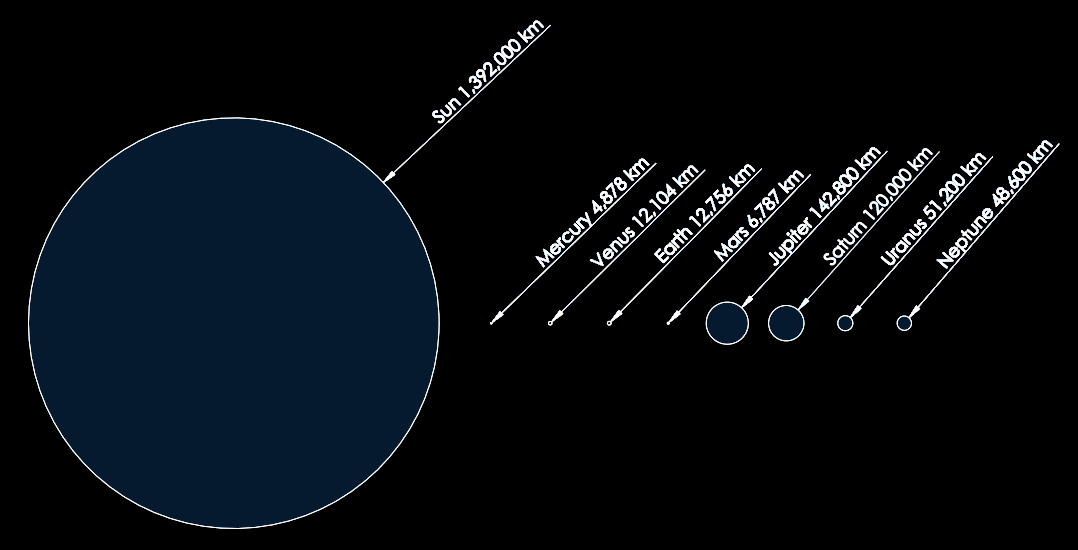Estimates
The Solar System to Scale
The solar system is commonly illustrated with pictures that show the planet sizes to scale, but the distances between them are not to scale or not to the same scale at least. A typical image, shown here, shows the planet sizes to scale, but the distances between them are not to scale. The video here illustrates the reason why the solar system is commonly shown this way, but this technique leads the audiance to beleive that the planets are relatively closer together than they actually are./p>
-
Figure 1
Planet Sizes
Planet sizes to scale, but distances are not to scale.
The video here shows the planet sizes, starting with the Sun, and distances between them drawn to the same scale. When the video zooms out at the end, to show the entire solar system, some planets are smaller than a single pixel when depicted on a typical monitor.
